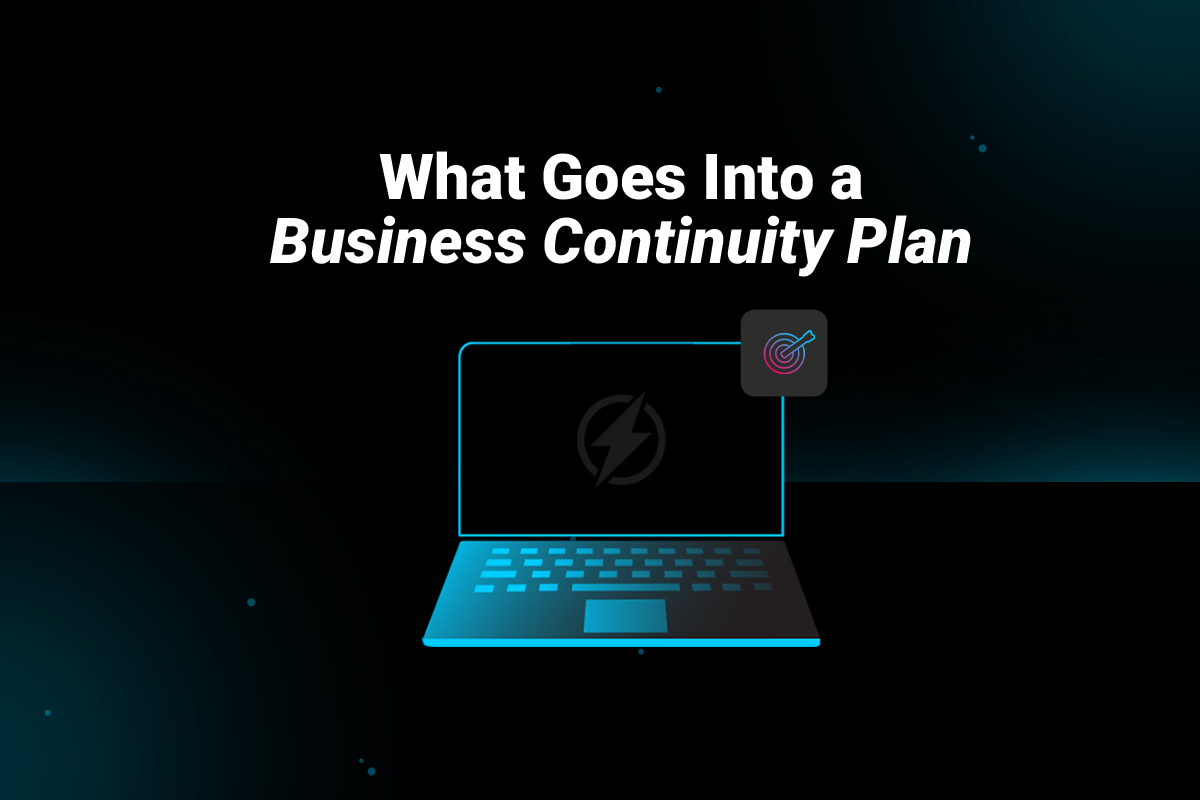
Running a business can be unpredictable. Now more than ever, companies must remain agile and ready to adapt in the face of unexpected challenges. Ensuring business continuity in times of difficulty isn’t always easy, but with the right plans in place, it is achievable. This guide shares everything you need to know about developing a business continuity plan, so you can return to business-as-usual as quickly as possible during a crisis.
What is Business Continuity?
Business continuity refers to the maintenance or rapid resumption of core business processes in the event of a significant, unexpected disruption. Natural disasters, cyber attacks, and even the COVID-19 pandemic are all examples of incidents that have the potential to halt business operations. However, by taking steps to ensure business continuity during these events, organizations can respond quickly and protect key functions.
Understandably, business continuity is sometimes confused with disaster recovery. Disaster recovery is, in fact, a part of business continuity that focuses on restoring data access and IT infrastructure after a catastrophe. Business continuity, by comparison, focuses on keeping the entire business operational during a disaster or extended disruption.

Post-Data Breach: Navigating a Response Plan
In the event that your critical data, documents, or customer information are exposed, is your business prepared to respond?
Watch the WebinarWhat is the Primary Goal of Business Continuity?
The primary goal of business continuity is to keep core functions up and running during an unexpected disaster, and to recover with as little downtime as possible. This is achieved by monitoring risks, training staff, and developing an airtight business continuity plan.
As data breaches and other disasters become more common in the business landscape, it’s no longer a question of if a crisis will strike, but when. While cybersecurity and other protective measures can help prevent and mitigate many of these issues, businesses should still prepare for the worst case scenario.
What is a Business Continuity Plan?
A business continuity plan is a checklist that contains the steps that should be taken to keep the business operational when continuity is threatened. A critical component of your risk management strategy, a business continuity plan is designed to include contingencies for business processes, assets, and every critical aspect of the company that could be affected. This facilitates:
Disaster recovery: Your business continuity plan should include a disaster recovery plan to address IT disruptions to devices, networks, and servers. The disaster recovery plan ensures sensitive data can be recovered if the primary storage site is rendered inoperable.
Continuous availability: Ensures the business has access to crucial applications for core processes regardless of local failure. These failures could be anything from IT infrastructure issues to physical facility problems.
Continuous operations: Ensures the business continues to be operational during and after the disruption, regardless of how long it lasts. This also applies during scheduled disruptions such as planned maintenance or scheduled backups.
A business continuity plan is different from a trajectory or 5 year plan, but both are crucial to have.
What Goes into a Business Continuity Plan?
A business continuity plan should start with an investigation into any and all risks that put your business continuity at risk. After identifying potential risks and threats, your business continuity plan should include:
- How each risk affects core business operations
- Procedures and safeguards to lower risk
- Step-by-step responses in the event that risks escalate
- Testing protocols to ensure the plan works
- An ongoing review process that confirms the plan is always up to date
There are several steps involved when creating an effective business continuity plan, including:
1. Business impact analysis
Business impact analysis defines the effects of disruption to business processes and functions. It also uses the available data to make informed decisions about recovery priorities and strategies.
2. Recovery
During this phase, the business needs to identify and implement the necessary steps to recover core business processes and functions. You can include your disaster recovery plan at this point to cover any IT-related disruptions.
3. Organization
For the plan to work, you need a continuity team that is trained and tested on threats that are currently or could potentially affect the business. This team is responsible for your company’s response to these disruptions.
4. Training
Training your continuity team as well as your wider employee base is crucial to the success of your continuity plan. Include practical exercises on continuity strategies and techniques and conduct refresh sessions regularly.
How Often Should a Business Continuity Plan be Tested?
While the frequency may vary between businesses depending on the level of risk, most experts recommend you test your business continuity plan at least twice a year. High-level tests check whether the plan is still in line with business objectives, while more in-depth drills ensure all stakeholders are still up to date on the stated procedures.
You can test the effectiveness of your continuity plan using the following methods:
Checklist: One of the simplest ways to test your continuity plan, a senior manager walks through each item on your plan list and checks all aspects are still current.
Desktop scenarios: More specific than checklist tests, desktop scenarios are used to test your team or company responses to different types of disruptions.
Simulations: This is a full re-enactment of a disaster situation. During simulations, each employee has to demonstrate the corrective measures required to recover from disruptions. Due to the large-scale nature of a complete simulation, these tests are often limited to annual occurrences.
Ensure Business Continuity with Electric
In a highly unpredictable world, business continuity plans allow companies to weather disasters with minimal disruption. However, creating a continuity plan requires time and resources, which can be limited in small and medium-sized companies. Electric improves your business’s resilience with comprehensive backup and IT disaster recovery that keeps your email and valuable documents protected. Contact us today to learn more about our business continuity services.



